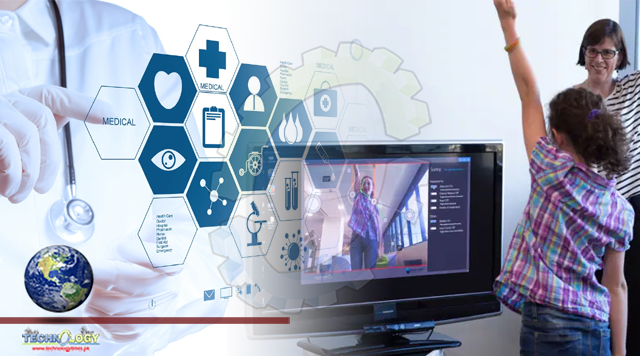At a time when healthcare needs to be as widely accessible as possible, Melbourne-based business Curve Tomorrow is empowering Australia‘s top medical researchers to get best-practice ideas out onto the field.

By JACKSON HEWETT
Junior sports is already becoming one such proving ground. One of the company’s most widely used apps is a collaboration with the Murdoch Children’s Research Institute to provide parents with a way to identify whether a knock on the football field could be a concussion.
Head Check, which takes users through a series of diagnostic questions to identify concussion symptoms and recommended courses of action, was originally targeted to worried parents at Aus kick games. Now the app is being deployed by the Australian Football League to assist coaching staff at senior league games identify warning signs.
Curve Tomorrow co-founder Mohinder Jaimangal says there are countless ideas sitting in research centres that can be democratised in a similar way.
“There are lots of great clinical guidelines that don‘t make it into the wider community,” Mr Jaimangal said.
“We work with the medical institutes and their practitioners to identify how that research can be applied, break down the medical jargon and design a product that puts that knowledge in consumers’ hands.”
The son of migrants from Guyana, Mr Jaimangal grew up aware of the stark differences between the haves and the have-nots. His parents pushed him towards becoming a doctor, but he became interested in tech instead, going on to complete a degree in robotics and ending up in research and development at General Motors, including stints in both Germany and Detroit.
“As I watched all this innovation take place at these large companies, I constantly had this nagging question. Why couldn’t innovation be used to make the world more equitable?” he says.
He threw in the job and travelled to India, one of the most inequitable places in the world, and set up a chocolate company to train low-caste children how to work in hospitality. That enterprise demonstrated he could combine profit with purpose but also deepened his desire to make a difference at scale.
Teaming up with like-minded entrepreneurs from similar migrant backgrounds in 2009, Curve Tomorrow‘s first project was to use a 3D camera to help clinicians assess the movements of children with cerebral palsy. Since then, they have built apps to manage allergy plans, track children’s moods linked to diabetes, and identify social disorders.
To build their products, they embed their teams with clinicians and apply design-thinking principles to bring the research to life. Their business model is either a fee-for-service payment to deliver the app, or they part own a product with the research institution and seek outside funding to launch it into the community.
With a workforce of 50, including 20 in Australia and an operations and development team in India and Pakistan, Curve Tomorrow is approaching $10m in revenue. Having built a stable, growing business in Australia, they plan to use the funding in the pursuit of greater impact rather than profit.
“A $1bn valuation is a success. But what if we were to become an impact unicorn and impact one billion people. It makes you think differently,” Mr Jaimangal said.
Mr Jaimangal believes the future of healthcare funding will be outcome- not intervention-based. Driven by major US health insurers who increasingly expect hospitals to demonstrate that expensive procedures don’t result in readmissions or costly follow-up treatments, the model looks to monitor patient rehabilitation.
Putting data collection into patients’ hands via smartphones, for example, is a scalable way health providers can demonstrate the effectiveness of a treatment.
Embracing that trend, the company spun out a new self-service platform, WeGuide, that allows researchers to effectively build their own apps on a platform with existing regulatory approvals, and without the need for complicated coding.
At the start of the pandemic, as researchers scrambled to identify existing drugs that may inoculate against Covid-19 symptoms, the WeGuide platform allowed clinicians at the Murdoch Children’s Research Institute to build an app to monitor a trial of 4000 health workers who had received the Bacille Calmette-Guerin (BCG) vaccine.
Rather than the standard two to six months for a similar product, it was spun up on the WeGuide platform in three weeks.
The Bill and Melinda Gates Foundation funded the trial with $10m, which expanded from Melbourne to Perth, Spain, then Brazil using the platform to track the trial’s outcomes.
WeGuide has already expanded into the Netherlands to partner with European institutions to build similar apps, and Mr Jaimangal says that after decades of talk about the power of digital healthcare, its time has finally come.
“The roadblocks around digital healthcare have been removed as we’ve needed a rapid response to this health crisis,” he said. “So this idea of virtual GP sessions that has been on cards for 10 years is now, at last, happening. It has forced alignment from the medical industry, government and, perhaps most importantly, patients.”
It is democratising healthcare for consumers as well as empowering researchers to break free from the bureaucracy of the health system.
“If you are a researcher and publish something on vitamin D, for example, the funding system drives you to win more grants so you can do more research – but there’s little incentive to get that research into the community. With this platform, there’s a quick and easy way to get that discovery out there. When we talk about preventative medicine, this is how you can do it.”
Ultimately the goal is to take best practice from top medical institutions and put that knowledge in the hands of those who don’t have access to the latest research.
“In developing countries, you have GPs who know a lot about different conditions. This is about empowering them with technology to see more people and provide better care because they have that knowledge at their fingertips,” Mr Jaimangal said.
“That’s how we get to impact one billion lives.”
Originally published at The Australian